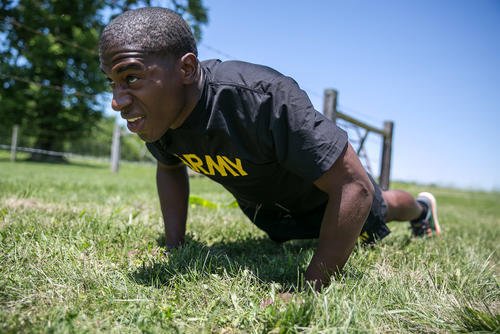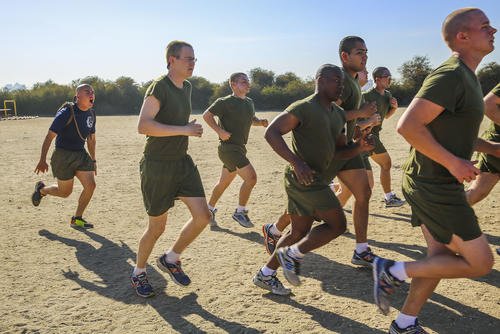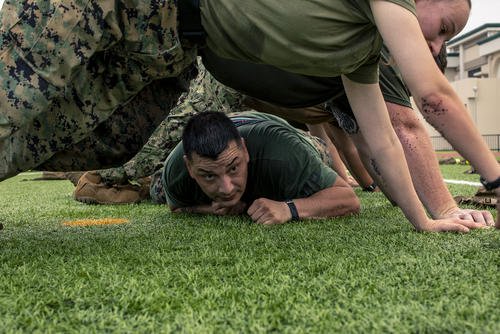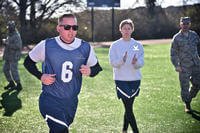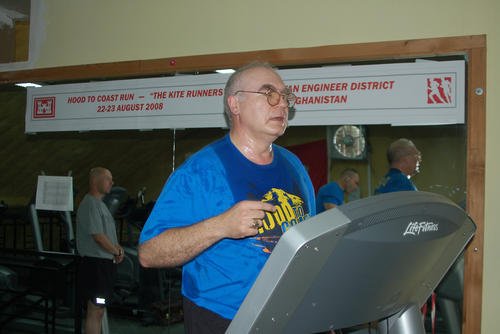We all grow older. There is nothing we can do about that, but the quality of those years is within our control, as recent research has shown.
After receiving a doctor’s approval to begin any exercise program, aging adults who have not been physically active for decades should start their fitness journey with the basics, such as walking and stretching. Once a solid foundation is built, though, a regular, higher-intensity exercise program can lead to remarkable improvements in heart health, according to one study.
That study covered a two-year, high-intensity interval training (HIIT) program and its effects on sedentary individuals 50 to 60 years old. They engaged in a HIIT regimen for 30 minutes per day, four or five days a week. After a couple of years, the participants showed the heart function and structure of those in people 20 years younger.
Read Next: The Best Strategy to Recover from a Running Injury Without Overdoing It
Here are some key findings:
- Heart rejuvenation: Since heart disease is the leading cause of mortality in the United States, strengthening your heart with a structured, high-intensity exercise can reverse heart aging significantly in only two years of consistency.
- Improved heart function: Exercise that increases one’s heart rate improves heart function, allowing it to fill with and pump more blood efficiently. That enhances cardiovascular fitness and oxygen use.
- Time efficiency: HIIT delivers significant benefits in less time, compared to traditional moderate-intensity workouts.
What Is High-Intensity Interval Training?
HIIT involves alternating periods of faster-paced activity that push your heart rate to higher maximum percentages with recovery. This method is accessible and effective for most adults, even those who have been inactive. You may want to opt for nonimpact cardio activities instead of running fast, especially if you are new to running.
The most important factor here is that intensity is relative. What may be a high-heart-rate effort for a beginner may be a Zone 2 easy pace for an advanced runner.
One of the most popular HIIT approaches is the Norwegian 4x4 protocol. Repeat four times:
- 4 minutes of high-intensity cardio at 95% of your peak heart rate
- 3 minutes of active recovery at 60%-75% of your peak heart rate
Sample HIIT Workouts for Beginners
Here are a few HIIT routines suitable for beginners. Always add a warm-up and cooldown (5-10 minutes each) and adjust intensity as needed:
Modified Tabata interval (repeat eight times for a total of 4 minutes):
- 20 seconds of fast-paced activity (running, cycling, rowing, etc.)
- 10 seconds of rest or slow movement
- Rest for 2 minutes after 8 sets; repeat once more, if able
Hill intervals (repeat six to eight times). Find a hill, set a treadmill to incline or a bike to a higher resistance, then:
- Walk or jog up at a challenging pace for 1 minute
- Walk down or lower incline for 2 minutes
10-minute workout (repeat five times):
- Sprint 30 seconds (any option: run, bike, row, etc.)
- Recover 1:30 (walk, easy on cardio machines)
Remember that intensity is relative. What may be considered high intensity to you may not be for someone well-trained. Make sure you are pushing yourself appropriately for your fitness level.
Science says transitioning from a sedentary lifestyle to regular high-intensity interval training can dramatically rejuvenate your heart and overall health. Depending on your current condition, you should gradually push yourself to these intensity levels. Remember to consult your doctor before starting, begin slowly and progress logically toward a healthier future.
Want to Learn More About Military Life?
Whether you're thinking of joining the military, looking for fitness and basic training tips, or keeping up with military life and benefits, Military.com has you covered. Subscribe to Military.com to have military news, updates and resources delivered directly to your inbox.







